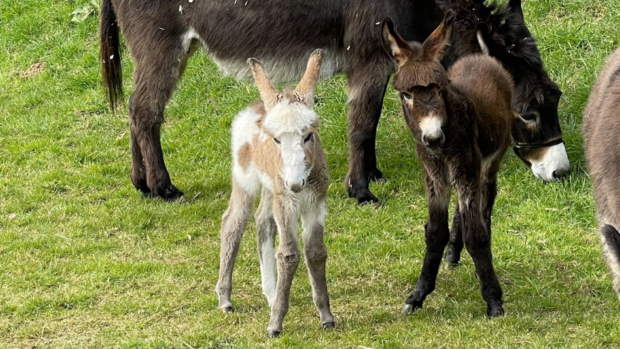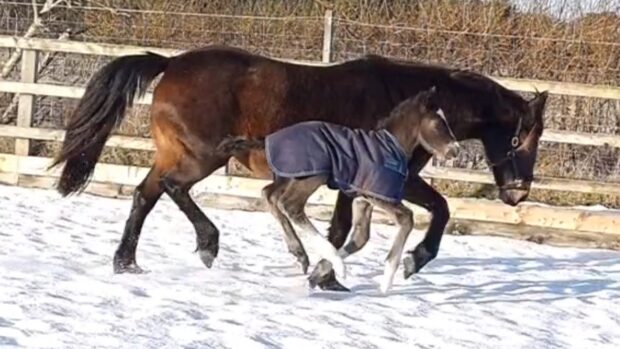Foals displaying signs of colic are relatively common cases in equine practice. “Colic” is the word used to describe any foal, or adult, with a painful abdomen: it can be due to a problem with the gut itself or other organs within the abdomen.
The causes of colic in foals are very varied and include obstructions of the gut, which can be due to meconium, the first faecal material passed by a foal. It is dark-brown to black in colour, tarry in consistency and is usually passed within 3hr of birth. Other causes can be torsions (or twists) in the gut, or, occasionally, eating a foreign body. Some medical conditions can cause colic, such as foals with gastric ulcers and also those with diarrhoea.
At the other end of the scale, a ruptured bladder or herniation of gut into the inguinal canal produce signs of abdominal pain in foals, but these are only resolved by surgery.
Determining the exact cause of a foal’s colic is not always easy, but an accurate diagnosis is important to enable appropriate treatment. A major decision to make is whether an operation is necessary or if medical therapy will resolve the situation.
Unfortunately, there is no specific test to determine if surgery is required but time is of the essence in making the decision, because foals can deteriorate rapidly. Information can be gained from several sources, such as the history, a clinical examination, as well as possible other specialised techniques, such as radiography, sampling the fluid inside the abdomen with a needle, or an ultrasound examination.
In adult horses a great deal of significance is placed on the findings of an internal or rectal exam, because this enables at least part of the gut to be palpated. However, the small size of a foal often means that this is not possible (or safe) to perform because of the risk of internal damage.
One technique that is sometimes very informative in foal cases is ultrasonography of the abdomen. It is a relatively simple technique and ideally performed with the foal standing. The ultrasound probe is placed on the ventral aspect of the belly (near the abdomen) so that parts of the small intestine, the caecum (equivalent to our appendix) and the large intestine can be examined.
The foal’s abdomen is relatively small and the gut less voluminous than in adults,
so the ultrasound probe can visualise a greater proportion. It is especially useful because it shows the size of the loops of the small intestine, the thickness of their walls and whether they are showing normal activity (or motility).
For example, in a case where a section of the small intestine has become twisted, causing its blood supply to be reduced, the wall of the affected gut will appear thickened, which indicates that it is becoming unhealthy. The diameter of adjacent blocked loops will be very large as they become distended with fluid and little motility will be seen.
By contrast, a case of diarrhoea will show enlarged loops but the thickness of the wall would be normal. In a few colic cases, the pictures obtained with the ultrasound machine are specific to a certain type of colic, for example a case of intussusception.
This problem can occur in either the small intestine or the caecum. It is caused by one piece of gut telescoping into the next section, which is similar to the end of a glove finger being pushed in on itself. The result is gut of a narrower diameter, which prevents the normal free flow of food and fluid along the gut.
If the small intestine is affected, the signs of pain are seen because the upstream portions of the gut have to work extra hard to push food through the narrowed segment.
Ultrasound is really useful here: it shows a cross-section of the affected gut, a series of concentric rings, or a “bull’s-eye” appearance is seen, which is a classic sign of a cross-section through an intussusception.
The cause of an intussusception is poorly understood, but they are known to follow episodes of gut irritation, for example a bout of diarrhoea or a heavy worm-burden, particularly tape worms.



